Vertical proxy: Application scenarios and disruptive potential of encrypted native proxy

Reprinted from jinse
02/17/2025·2MAuthor: 0xJeff, head of Steak Studio; Translation: Golden Finance xiaozou
When we look at a wide range of applications outside of Web3, many companies, whether large or small, have begun to integrate artificial intelligence agents (AI Agents) into their daily operations—including sales, marketing, finance, law, Nearly all imaginable areas including IT, project management, logistics, customer service, and workflow automation.
We have transitioned from an era where humans manually process data, perform repetitive tasks, and fill out Excel forms to an era where digital workers (AI agents) operate 24/7. Not only are these agents more efficient, but they are significantly less costly.
Web2 companies are willing to pay $50,000 to $200,000 or more for AI-powered sales and marketing agents. Many agents operate high-profit businesses through SaaS subscription models or usage-based models (charged by token usage).
1. **Application scenarios of AI agents in Web2: Insights from Y
Combinator**
Apten - A proxy tool combining artificial intelligence and SMS (SMS) technology aims to optimize sales and marketing processes.
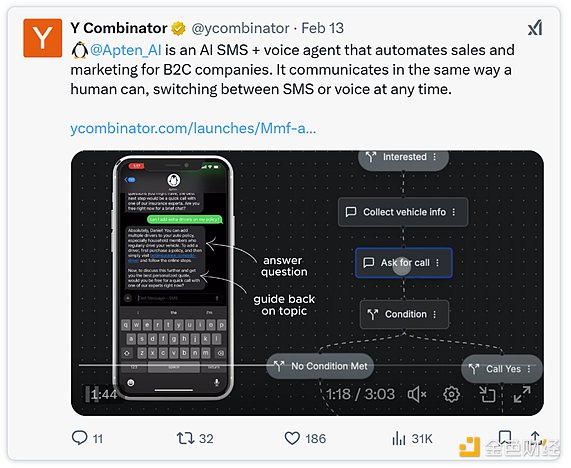
Bild AI - an artificial intelligence tool that can read architectural blueprints, extract materials and specification data, and conduct cost estimates based on the collected information.

Casixty - A marketing agency tool that can identify popular topics on Reddit, automatically generate replies and increase brand engagement rates. Imagine what effect this product would have if it was applied to CT (crypto community)!
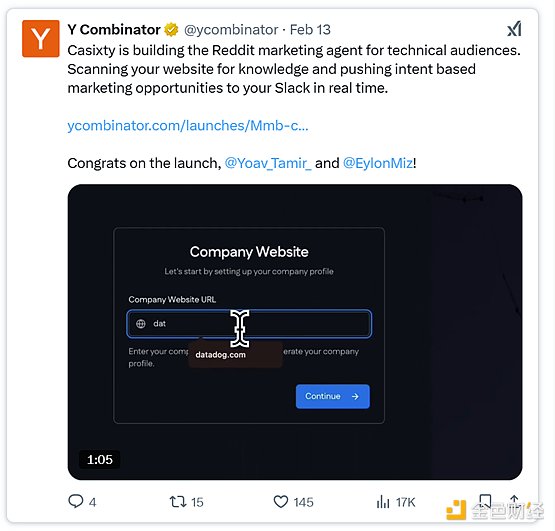
These cases show how AI agents are transforming traditional industries, automating manual tasks and optimizing workflows. Although Web2 companies have quickly adopted AI-powered proxy technology, the Web3 sector has also begun to embrace this technology—but there is a key difference.
Unlike Web2 that only focuses on operational efficiency, Web3 's AI agents and blockchain technology are deeply integrated, thus unlocking a brand new application scenario.
2. Web3 AI Agent: Beyond "chat bots"
A few months ago, most Web3 proxy was just conversational bots on Twitter. However, this area has changed significantly. These agents are now integrating with a variety of tools and plugins to enable them to perform more complex operations.
@sendaifun - Solana AI proxy toolkit, supports a range of functions from
base token management to complex DeFi operations.
@ai16zdao ——Integrates more than 100 plug-ins, covering areas such as social
media interaction, automated transactions and DeFi operations.
@Cod3xOrg , @Almanak__ - No code infrastructure, allowing users to create
autonomous transaction agents.
@gizatechxyz - an autonomous DeFi assistant designed for investors.
As the largest sector in the encryption field (the total locked value exceeds US$100 billion), DeFi has become the center of the most influential crypto- native AI agent application scenarios, namely DeFAI (Decentralized Financial Artificial Intelligence).
AI agents in DeFi not only simplify complex operations through natural language processing (NLP) interface, but also use on-chain data to unlock new opportunities. Blockchain provides rich structured data—including vouchers, transaction history, profit and loss records, governance activities, and lending models. AI can process, analyze and extract insights from this data, automate workflows and optimize decisions.
3. Web2 vertical domain proxy based on encryption infrastructure
We also witnessed the rise of Web2 vertical domain proxy that integrates encryption native models. A classic example is the launch of Virtuals.io on Solana.
Perspective AI - A fact-checking tool powered by artificial intelligence, continuously optimized through community feedback.
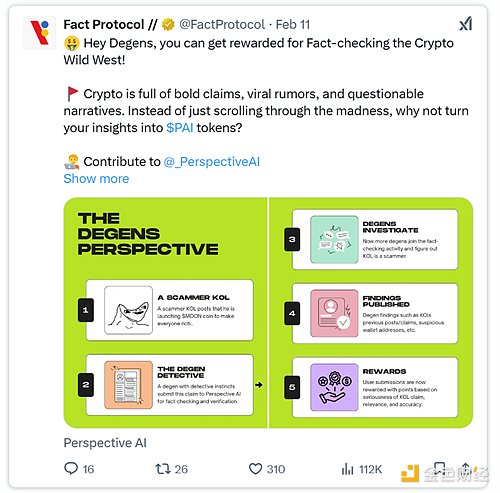
R6D9 – A personal assistant tool that allows booking air tickets, taxis, ordering groceries, and scheduling meetings.
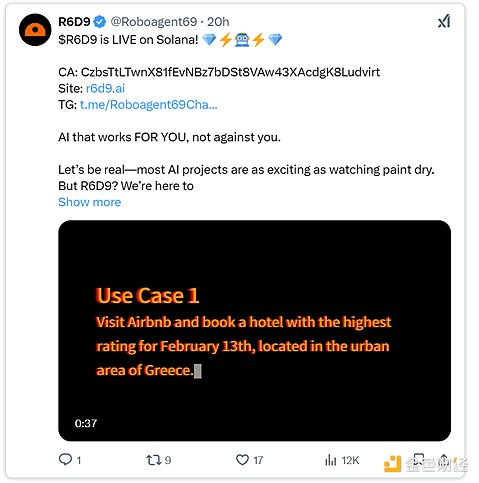
HeyTracyAI - a sports commentary and analysis platform driven by artificial intelligence, focusing on NBA events in the early days.
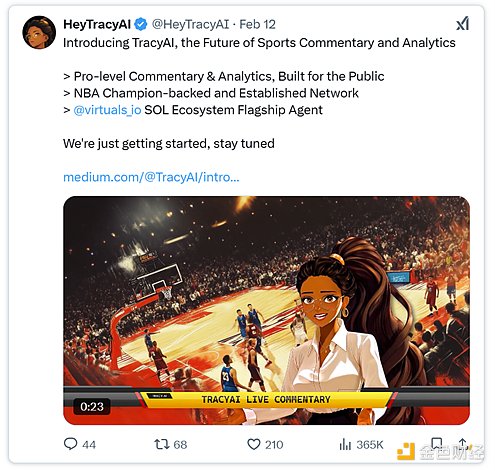
Unlike the traditional SaaS (Software as a Service) model, these agents usually use token gating mechanisms, where users need to pledge or hold a certain number of tokens to gain advanced access, while still being able to use basic hierarchical services for free. Its revenue source mainly depends on token transaction fees and API interface usage fees.
4. Can Web3 AI agents compete with Web2 startups?
In the short term, the Web3 team faces challenges in finding product market fit (PMF) and achieving substantial user adoption. They need at least $1 million to $2 million in annual recurring revenue (ARR) to compete effectively. However, in the medium and long term , the Web3 model has inherent advantages:
-
Community-driven growth : Drive community spontaneous growth through token incentives and consistency of interests.
-
Global liquidity and accessibility : Decentralized and unmanaged platforms eliminate barriers to adoption and enable seamless access worldwide.
In addition, the rise of DeepSeek and the interest of Web2 AI talents in open source AI are further accelerating the coordinated development of the encryption field and artificial intelligence.
5. Core application scenarios of encrypted native AI agents
-
DeFAI (Decentralized Financial Artificial Intelligence) - Abstract layer, automated transaction agents, and pledge/lending/borrowing solutions: Provide front-end support for DeFi infrastructure to improve the efficiency and user experience of DeFi products.
-
Research and Inference Agent – AI-driven research assistant: analyzes data, filters noise, and generates actionable insights. My personal favorite recently is security agents. @soleng_agent is a developer relationship agent that focuses on analyzing the GitHub code base and helps developers optimize projects. @CertiK_Agent provides AI-based audit services for identifying potential threats (a proxy scoring system is about to be launched), providing security for smart contracts and blockchain projects.
-
Data-driven AI agents - leverage on-chain data and social media data to empower independent decision-making and execution.
These three vertical fields represent the most promising development directions for crypto-native AI agents.
6. Summary of the status quo and future prospects
In the past more than a month, the market has continued to consolidate, and altcoins and AI agent-related tokens have experienced a significant pullback. However, we are entering a stage where the fundamentals of the tokens are gradually becoming clear.
AI agents in the Web2 vertical have proven their value, and many businesses are willing to pay high fees for AI-driven automation services. At the same time, although AI agents in the Web3 vertical field are still in their early stages, they have huge potential. By combining token incentives, decentralized access, and deep integration with blockchain data, Web3 AI agents have the opportunity to surpass similar products of Web2 and achieve more profound development.
But the core question still exists: Will AI agents in the vertical field of Web3 reach the adoption level comparable to Web2, or will this field be completely reshaped by leveraging the native advantages of blockchain?
As vertical AI proxy continues to evolve in Web2 and Web3, the line between the two may gradually blur. Teams that can successfully integrate the advantages of both - leverage the efficiency of AI and the decentralized characteristics of blockchain - are likely to shape the future of next- generation automation and intelligence in the digital economy.


 chaincatcher
chaincatcher
 panewslab
panewslab